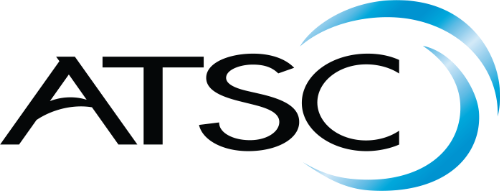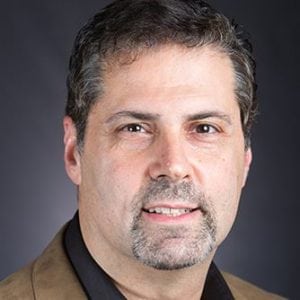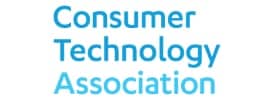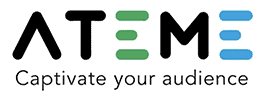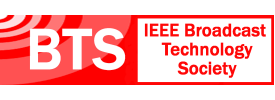- About
- Members
- Sponsors
- Subcommittees
- About Our Subcommittees
- Technology Group 3
- Implementation Team 1 – Advanced Emergency Information
- Implementation Team 2 – India
- Implementation Team 3 – ATSC 3.0 Conformance
- Implementation Team 4 – Brazil
- Implementation Team 5 – Tower Network
- Implementation Team 7 – Caribbean
- Implementation Team 8 – Automotive
- Planning Team 4 – Future Broadcast Ecosystem Technologies
- Planning Team 5 – Automotive Applications
- Planning Team 6 – Global Recognition of ATSC 3.0
- Planning Team 9 – Sustainability
- Technical Documents
- News
- Events
- Spotlight ATSC 3.0
- Contact Us
- Member Login
- Member Meetings
- Advanced Search
Search Site
Member Links
- About
- Members
- Sponsors
- Subcommittees
- About Our Subcommittees
- Technology Group 3
- Implementation Team 1 – Advanced Emergency Information
- Implementation Team 2 – India
- Implementation Team 3 – ATSC 3.0 Conformance
- Implementation Team 4 – Brazil
- Implementation Team 5 – Tower Network
- Implementation Team 7 – Caribbean
- Implementation Team 8 – Automotive
- Planning Team 4 – Future Broadcast Ecosystem Technologies
- Planning Team 5 – Automotive Applications
- Planning Team 6 – Global Recognition of ATSC 3.0
- Planning Team 9 – Sustainability
- Technical Documents
- News
- Events
- Spotlight ATSC 3.0
- Contact Us
- Member Login
- Member Meetings
- Advanced Search
SOMEONE YOU SHOULD KNOW: Alan Stein, Technicolor
Posted on July 10, 2018 in ATSC News
Alan Stein is the Vice President for Technology, Development and Standards at Technicolor. He spends most of his ATSC time as chair of the S34-1 video ad-hoc group. In his “spare” ATSC time, he also actively participates in the ATSC’s S31 Specialist Group on System Requirements, S34 Specialist Group on Applications and Presentation, S37 Specialist Group on Conversion and Redistribution of ATSC 3.0 Services and the S34-2 audio ad-hoc group.
“I believe ATSC 3.0 is transformative,” says Stein, emphasizing the value of ATSC membership. “Broadcasters, CE and technology companies have invested their time and energy into creating a new standard suite that enables a wide variety of business models and devices.”
Decades of Innovation
Stein spent the first decade of his career at MIT Lincoln Laboratory in Boston working on a real-time signal and image processing system for the Firepond wideband laser radar. “That was a key development of SDI (the Strategic Defense Initiative) and also on wind-shear detecting systems for weather radar systems installed in over 100 airports in the U.S. today,” he says.
In the early ‘90s, Stein left Lincoln for New Jersey-based startup Ariel Corp., where he developed software, firmware and tools. Later, he started a software consulting practice that got him involved with video and companies like Sarnoff, NEC Research Institute and Bell Labs, “where I first worked on video codecs and wireless streaming,” he recalls.
Eventually, Stein went on join Thomson’s Princeton Research Lab focused on creating a software implementation of the evolving H.264/AVC video codec, before joining Technicolor’s technology team.
Passion for HDR
At the ATSC, Stein is deeply involved with work on HDR (high dynamic range) updates to the A/341 video standard.
“Currently, the standard (A/341:2018) specifies a number of options for HDR video. Fundamentally, HDR video may be delivered as native PQ or HLG, or it may be encoded as SDR (standard dynamic range) with SL-HDR1 metadata to recover HDR. For PQ-based HDR approaches, there are several additional options specified, including static metadata (also known as ‘HDR10’), target display adaptation metadata (based on SMTPE 2094-10), full-range coding, and ICTCP color primaries,” Stein opines.
He adds that the ATSC 3.0 suite of standards offers major efficiency gains in video, audio and the physical layer coding. Stein also notes that there is an ongoing activity to evaluate an additional target display adaptation approach, using metadata based on SMPTE 2094-40, which is currently an ATSC Candidate Standard.
“I think the truly impressive thing about ATSC 3.0 is that, while it will continue to evolve, each aspect of the system is really state-of-the-art today.”
Accomplished Musician
A passionate cyclist, Stein and his wife, Marcia, live in Princeton, N.J., with their flat-coated retriever, Josie. The Steins’ grown children live in Boston and Philadelphia.
An accomplished musician, Stein has played jazz, blues and rock guitar since he was a teenager. He’s a key member of ATSC’s own house band, The Multicasters, which performs at the annual ATSC Next Gen TV Conference.
“I’m currently working on a new project,” he says, “with a wonderful jazz/pop vocalist named Archana Rama.” Listen to audio samples from Stein’s latest project here: https://www.reverbnation.com/archana7.
Posted in ATSC News
News Categories
News Archives
Subscribe
Subscribe to The Standard, our monthly newsletter. Learn More
Join ATSC
ATSC is a membership organization with both voting and observer categories. Voting members include corporations, nonprofit organizations, and government entities, and they participate actively in the work of ATSC. Observers are individuals or entities not eligible to be a voting member.
Subscribe to our Newsletter
Subscribe to The Standard, our monthly newsletter, to stay up-to-date with ATSC news and events around the world.
Site Links
Contact Us
Advanced Television Systems Committee, Inc.
1300 I Street NW, Suite 400E
Washington, DC 20005
Do you have questions about ATSC?
About ATSC
The Advanced Television Systems Committee, Inc., is an international, non-profit organization developing voluntary standards and recommended practices for digital terrestrial broadcasting. ATSC member organizations represent the broadcast, broadcast equipment, motion picture, consumer electronics, computer, cable, satellite, and semiconductor industries. ATSC also develops digital terrestrial broadcasting implementation strategies and supports educational activities on ATSC standards.
© 2024 ATSC
